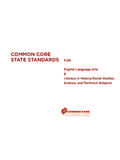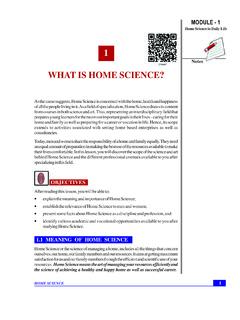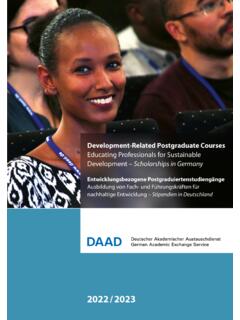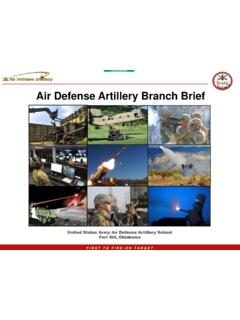Transcription of Integrating the disciplines: Successful interdisciplinary ...
1 Integrating the disciplines: Successful interdisciplinary subjects Clinton Golding 1 interdisciplinary teaching and learning is integral to the curriculum at the University of Melbourne. There has always been a range of interdisciplinary subjects offered in cross-disciplinary degrees, but the Melbourne Model has given further emphasis to interdisciplinary breadth of learning. For example, the University offers at least two types of subject which are explicitly interdisciplinary : University Breadth Subjects taught by cross-faculty teams and offered to undergraduate students from any faculty, and interdisciplinary Foundation subjects which are compulsory first-year Arts subjects that integrate several Arts disciplines.
2 As well as these subjects, the Attributes of the Melbourne Graduate (2009) stated that graduates of the University of Melbourne should be knowledgeable across disciplines with the ability to examine critically, synthesise and evaluate knowledge across a broad range of disciplines. Finally, Refining our Strategy (2009) stressed interdisciplinary research as a key thrust for the future, and called for the development of greater interdisciplinary capacity. This guide was only possible thanks to those at the University of Melbourne who shared their experience of interdisciplinary teaching. In particular I would like to acknowledge the following people who provided substantial expertise and examples from their interdisciplinary subjects: Ruth Beilin, Helena Bender and the team from Reshaping Environments, Rachel Webster and Maurizio Toscano from Climate Change, Elizabeth Presa from Poetics of the Body, Janet McCalman from An Ecological History of Humanity, Philip Morrissey and Johanna Simmons from Australian Indigenous Studies, the teaching team of From God to Genes: Understanding Homosexuality, Greg Restall from Logic.
3 Language and Information, Tilman Ruff from Global Health, Security & Sustainability and Alison Duxbury from Human Rights and Global Justice. I would also like to acknowledge the feedback provided by Annie Bolitho from the Melbourne Sustainable Society Institute. Clinton Golding November 2009 Integrating the disciplines: Successful interdisciplinary subjects was developed by Clinton Golding of the Centre for the Study of Higher Education. Permission is granted for copying, distribution and use by other institutions, with appropriate acknowledgement. Available in electronic form from ISBN: 978-0-7340-4123-4 Further queries regarding permissions and availability: Centre for the Study of Higher Education The University of Melbourne 2 Introducing interdisciplinary subjects There are various important but complex problems, phenomena and concepts that resist understanding or resolution when approached from single disciplines.
4 Climate change and world poverty are clear examples, but equally, a full understanding of identity, public health, human rights, or knowledge can only be constructed by applying multiple perspectives and ways of thinking. For example, Carolan (2008) shows that the debate surrounding genetically modified organisms involves a tangle of factual, moral and epistemic issues that require multiple disciplines to unravel. While disciplinary depth is essential for investigating these complex issues, they also require what Howard Gardner calls a synthesising mind (2006, ). They require investigators who can engage in interdisciplinary translation and synthesis, as part of multidisciplinary teams or individually, in order to develop more complete pictures than would be possible from any one disciplinary perspective.
5 As Lyon (1992) and Brew (2008) show, this is not a deviant exception, but a common path for the modern academic. The implication is that we must educate for both disciplinary and interdisciplinary expertise. interdisciplinary education must supplement disciplinary teaching and learning so students can learn how to respond to challenges that transcend disciplines, work in the confluence of multiple disciplines, and develop research trajectories that do not conform to standard disciplinary paths. interdisciplinary subjects are pivotal for this interdisciplinary education, teaching how to understand, navigate and employ multiple and often contrary ways of knowing.
6 In these subjects students develop a meta-knowledge about different disciplines, methods and epistemologies, and learn how to purposefully and reflectively integrate and synthesise different perspectives in order to advance understanding and solve problems. Yet because of the complexity of working across multiple ways of knowing, interdisciplinary subjects are challenging to teach. This guide provides materials and strategies to support the Successful design, organisation, teaching, and evaluation of interdisciplinary subjects. 3 What are interdisciplinary subjects? In an interdisciplinary subject, students explore and integrate multiple perspectives from different disciplines, sub-disciplines and areas of expertise.
7 This is different from what might be called a multidisciplinary subject which juxtaposes multiple perspectives on the same topic without integration. Interdisciplinarity involves a synthesis or balance of multiple perspectives to produce such things as a deeper understanding or illumination, a balanced judgement, viable solution or a product that creatively accommodates the different perspectives. Boix Mansilla and Duraising call this developing an interdisciplinary understanding: We define interdisciplinary understanding as the capacity to integrate knowledge and modes of thinking in two or more disciplines or established areas of expertise to produce a cognitive advancement such as explaining a phenomenon, solving a problem, or creating a product in ways that would have been impossible or unlikely through single disciplinary means (2007, ).
8 The defining features of interdisciplinary subjects are first, some sort of interdisciplinary move or cognitive operation and second, what Nikitina (2002) calls an integrative structure, which is the intended result of the interdisciplinary operation. Although Boix Mansilla and Duraising stress integration as the key move or operation for interdisciplinary learning, other possibilities are translation, balancing, accommodation, synthesis, or making connections between multiple perspectives. There are numerous integrative structures that may result: an interdisciplinary interpretation or explanation, conceptualisation, theory or meta-theory, resolution or solution, deeper understanding or illumination, model, metaphor, product, policy, narrative, taxonomy, rule or application (Nikitina, 2002; Miller and Boix Mansilla, 2004; Gardner, 2008, ; Boix Mansilla & Duraising, 2007).
9 Students need to learn meta-disciplinary skills, attitudes, and understandings if they are to make these interdisciplinary moves and produce the integrative structures. Teaching these explicitly is essential because students are unlikely to have learned them previously, given the concentration on disciplinary teaching in much of the education system. In particular, interdisciplinary students need to learn how to occupy different disciplinary perspectives, and to talk critically but reasonably across these perspectives. They need to be able to comprehend and translate disciplinary languages, ways of knowing and methods, and then balance, synthesise and integrate them.
10 Gardner calls this learning an interdisciplinary pidgin (2008, ). Students need interdisciplinary collaboration skills if they are to work in a cross-disciplinary team, and disciplinary interpretation and synthesis skills if they are personally Integrating information from multiple disciplines. Also, interdisciplinary students must learn to interrogate multiple ways of knowing and the structure of knowledge itself. They must develop a reflective and explicit knowledge of how disciplines work, the issues and problems they can address, and the strengths and limitations of each discipline as well as the possibilities of interaction between them (Boix Mansilla, Gardner & Miller, 2000, ).






